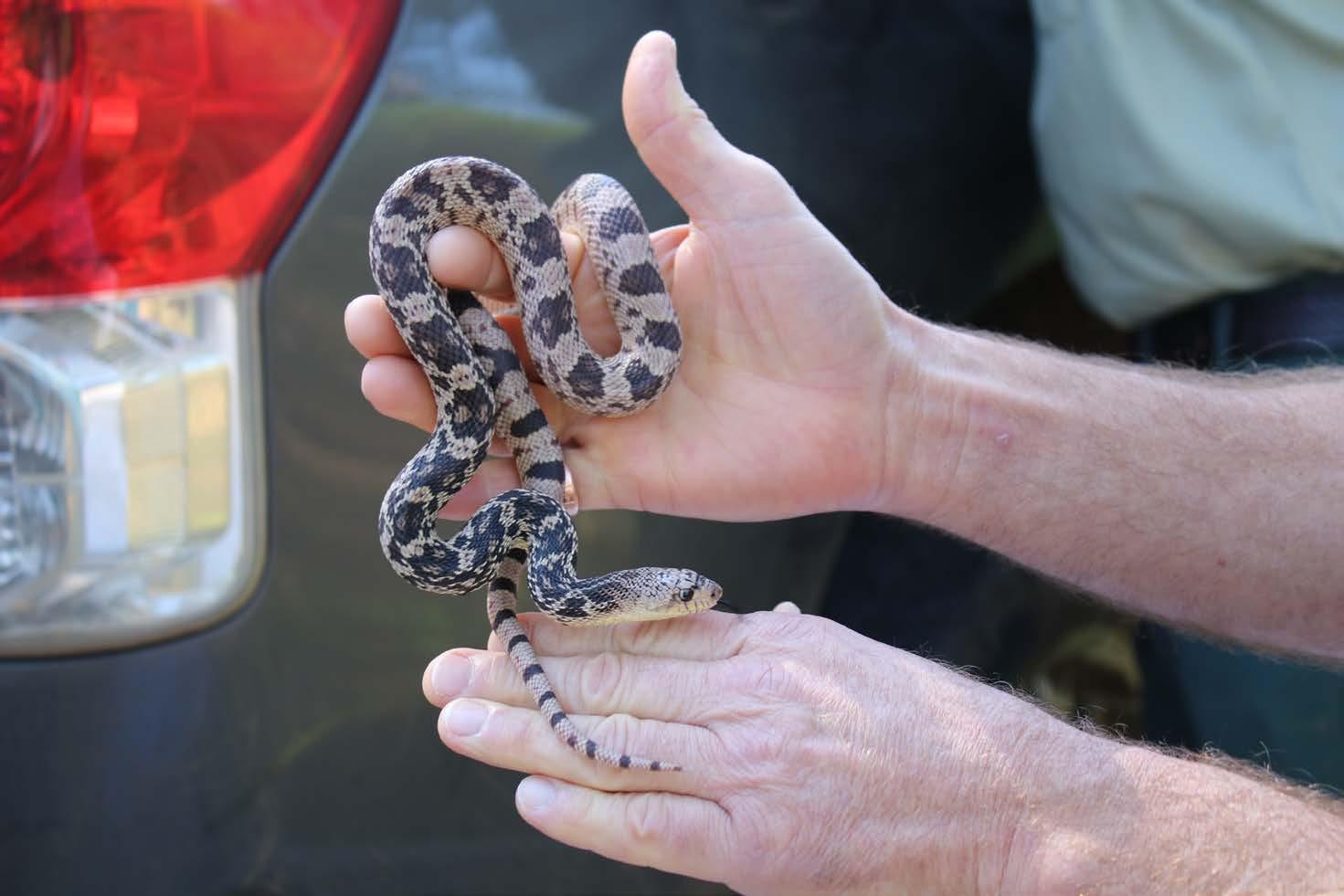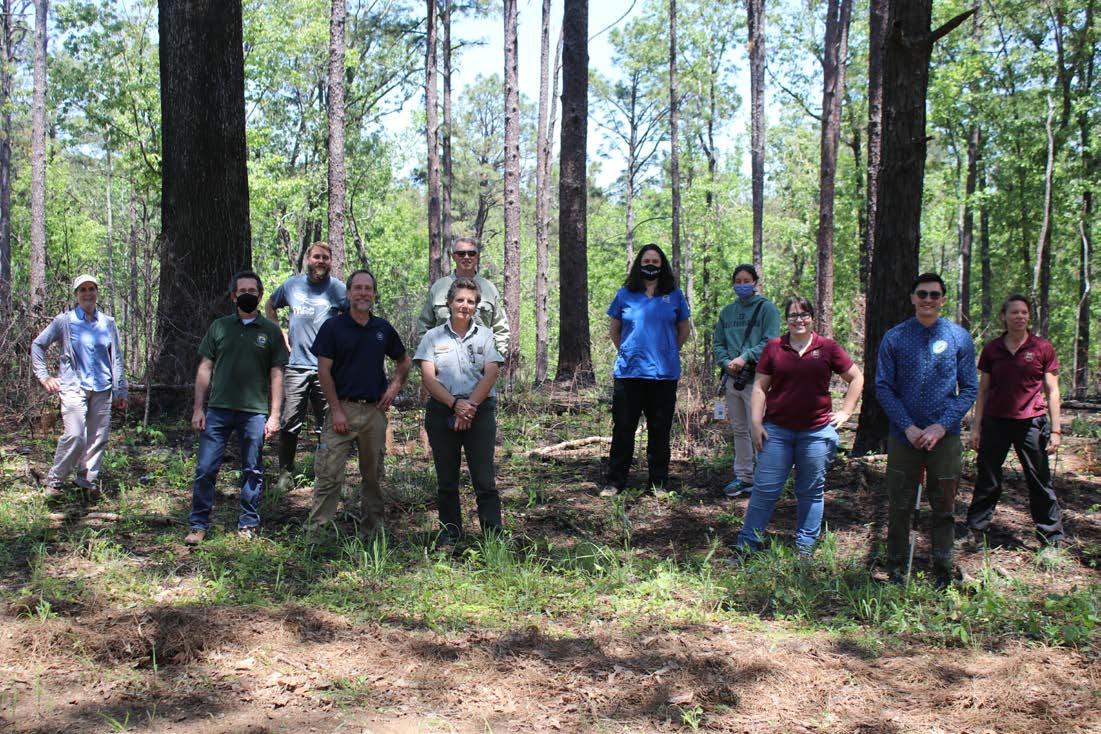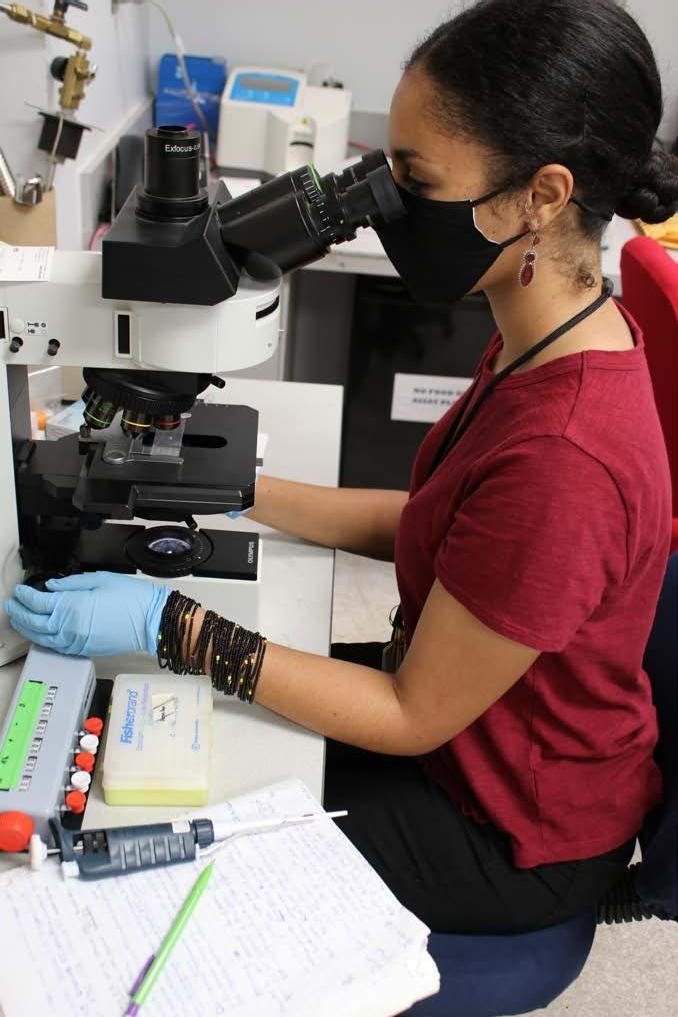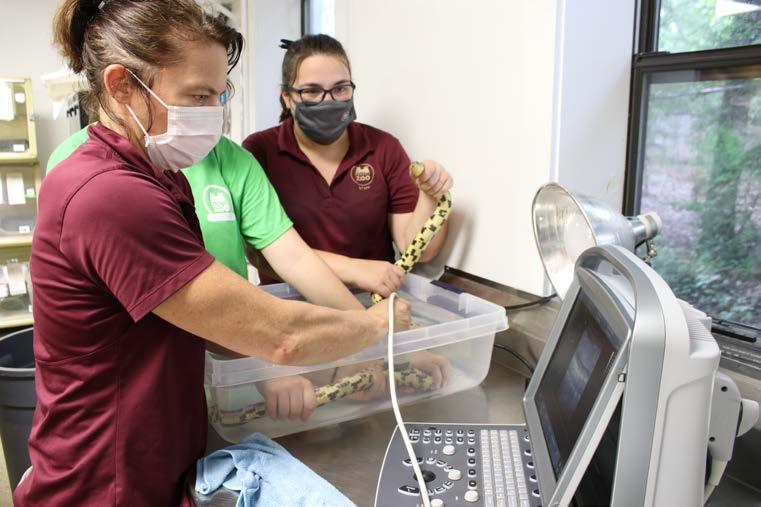
3 minute read
LOUISIANA PINE SNAKE
RELEASE TRIP 2021
Deep in the Kisatchie National Forest in the heart of Louisiana, Dr. Steve Reichling, research director at the Memphis Zoo, embarked on a very important mission of releasing dozens of the endangered Louisiana pine snakes into their natural habitat. In 2010, when they saw the wild populations rapidly declining, Dr. Reichling and his team at the Memphis Zoo took charge to revive the Louisiana pine snake and repopulate the species in its natural habitat.
Advertisement
This project begins in the research labs at the Memphis Zoo. Scientists conduct artificial insemination to supplement natural breeding and care for the clutches of eggs until they hatch. After the hatchlings are stable, they are prepped to be released. The team selects the healthiest and those most likely to survive in the wild environment. Scientists carefully place tracking devices into the snake, so they can be identified by remote devices placed in the forest to identify the snakes in the wild without being too invasive. The research team has produced hundreds of fertile eggs, which they have raised and prepped to be released back in the wild. Tracking the snakes once they return to the wild helps determine the success of the breeding programs and the stability of the population. Dr. Reichling explains the preparation for this project saying, “The work required to spend one day in the forest releasing dozens of Louisiana pinesnakes takes place every single day of the year leading up to that moment. The snakes under our care at the Zoo need meticulous tending by snake care experts, who mind the nutritional status of the pinesnakes, watch for any signs of illness like the best mother would do, and insure that every fertile egg laid yields a perfect and perfectly healthy baby – strong and suitable for release.”


The Louisiana Pine Snake is an endangered species native to the longleaf pine forests of Louisiana and Texas. They prefer the sandy, well-drained soils of open pine forests. They are the rarest snakes in North America. They are non-venomous with distinctive tan bodies patterned with blackish-brown splotches down their back. Their main prey source is the pocket gopher, which is prevalent in their ecosystem. They tend to live in the holes of pocket gophers and spend more than half their lives below ground. This snake species is unique in that they not only lay the largest eggs of any snake in North America, but they produce the fewest eggs per clutch. This low fecundity rate magnifies the other threats to pine snakes, such as deforestation, that negatively impacts their population sizes.
Most recently, on Earth Day 2021, April 22, the Memphis Zoo research team was joined by partners on the project from Fort Worth Zoo, Alexandria Zoo, U.S. Fish and Wildlife, and U.S. Forest Service to release 50 juvenile pine snakes into their indigenous habitat safely into stump holes and pocket gopher tunnels. Remarkably, the research team has discovered that snakes from previous releases have begun breeding naturally in the wild. This is a monumental discovery that shows the captive-bred snakes have successfully adapted to the area and will hopefully recover from its endangered status. Dr. Reichling explains that, “Conservation is about people, strong relationships, and the shared belief that important work can be done when working together. The Louisiana pine snake program is a perfect example of what passionate conservationists can accomplish in protecting wildlife. Our team is an outstanding group of forest rangers, scientists, silviculturists, landowners, and zookeepers.” Without the leadership of the Memphis Zoo research team, the populations of the Louisiana pine snake would have been decimated and lost to their natural environment forever.




